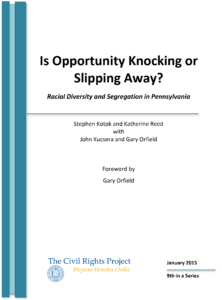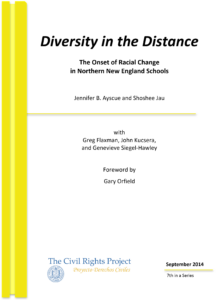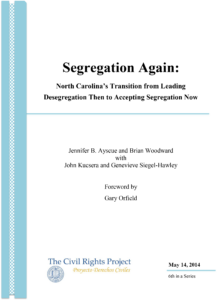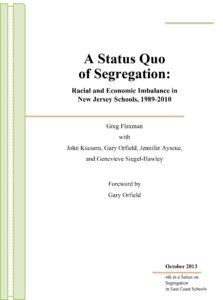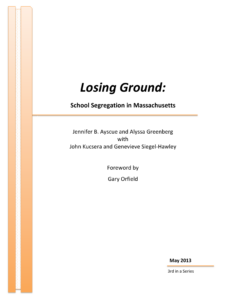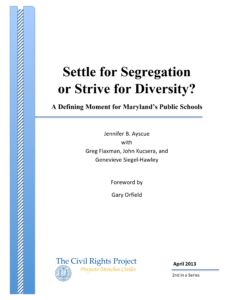From the Executive Summary
Delaware’s history with school desegregation is complicated and contradictory. The state both advanced and impeded the goals of Brown v. Board of Education. After implementing desegregation plans that were ineffective by design, Delaware was ultimately placed under the first metropolitan, multi-district desegregation court order in the US. The federal district court’s decision was significant because it rendered meaningless the city/suburban boundaries which dramatically separated students by race. The mandated desegregation plan, in place for almost two decades, made Delaware one of the two most integrated states in the US. It was eventually dissolved after the participating districts were granted unitary status. For the period of the court order, metropolitan Wilmington, contiguous with metropolitan Philadelphia, showed a pattern fundamentally different from the rest of the region. After the dissolution, it became far more similar. As Delaware schools grow more diverse, understanding the nature and scope of racial and economic isolation in the state today becomes ever more crucial.
This report examines school segregation trends in Delaware between 1989 and 2010. Drawing on federal data from the National Center for Education Statistics, it explores patterns at the state, metropolitan, and school district level. We provide the following data and policy recommendations in the hope that communities use them to push for positive change.
Since 1989, both black and Latino students experienced noteworthy increases in enrollment in Delaware’s minority-segregated schools. This trend became more apparent after 1995 when court oversight was terminated and the Wilmington area desegregation plan was dissolved. Today, almost two decades after unitary status, significant and rising portions of the state’s black students enroll in segregated schools that are very isolated by both race and socioeconomic status. Nearly one out of every eight black students in Delaware attends an intensely segregated school in which nonwhite students account for 90-100% of the enrollment.
Low-income students make up about 83% of the student population in the state’s intensely segregated minority settings, which indicates that poverty concentration is heavily layered onto racial isolation.
Broadly, findings also show that the state and its major metros and districts have become rapidly more diverse, particularly in the past decade. With rising levels of racial diversity come many opportunities for integration, but a key challenge will be to ensure that metropolitan areas and districts that become diverse remain diverse — and do not resegregate.
This report is part of a special series, “School Segregation Trends in the Eastern States.” These studies explore trends in enrollment and school segregation patterns from 1989 to 2010 at the state and regional levels, including various metro areas for each state. The reports also document the history of school desegregation in each state and across its geographic regions, including key desegregation cases and remedies, when applicable.
In compliance with the UC Open Access Policy, this report has been made available on eScholarship:


